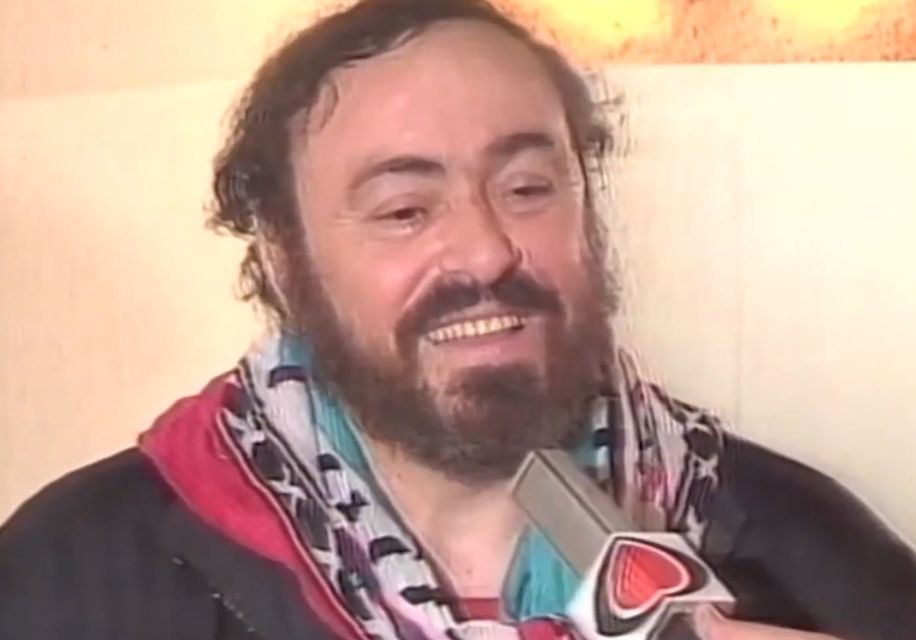Simply put, an aria is a self-contained musical piece for a single voice. It is usually accompanied by an orchestra, but doesn’t have to be. It is normally part of a larger work, such as an opera, oratorio or cantata. But it is most often associated with opera.
An aria often marks a break in the dramatic action of the piece. Instead it gives the audience an insight into a character’s thoughts or state of mind. The singer will face the audience and deliver their thoughts as an aside.
As such, an aria can be compared to a soliloquy in a play, in which a character seems to speak directly to the audience. Hamlet’s “To be or not to be” speech in the Shakespeare play of the same name is a good example.
The speech doesn’t move the plot along, rather it shows us what is going on in the key character’s mind. Alone on the stage, he is talking to himself – with only the audience as his witness. We see a young man contemplating suicide – it’s a key moment in the play and crucial to understanding Hamlet’s state of mind and his motivations, but it doesn’t add anything to the action.
None shall sleep
One of opera’s most famous arias is the tenor piece ‘Nessun dorma’ in Puccini’s Turandot (1926) – with a 1972 version by Italian tenor Pavarotti famously used in the 1990 World Cup in Italy. Translated as None shall sleep or Let no one sleep, it is sung by Calaf, an unknown prince who is determined to marry the eponymous princess.
Any man who wishes to marry Turandot must first answer her three riddles or be beheaded. Calaf has succeeded in the challenge but the princess still refuses to give him her hand. So Calaf sets his own challenge: if Turandot can’t guess his name then she must marry him, but if she correctly guesses then he will be beheaded.
Turandot decrees that ‘none shall sleep’ until she knows the prince’s true name. She charges her subjects to discover it – ordering that if they fail they will all die.
The opera’s second act opens with Calaf’s aria. It’s night time and he is alone in the palace’s moonlit garden. The prince is sure of his plans and the aria communicates to the audience his confidence. It begins with the prince mocking Turandot’s pronouncement that none shall sleep until his name is revealed, and its final words are “At dawn, I will win! I will win! I will win!” Not much room for doubt there!
The aria doesn’t add anything to the plot, instead it provides us with a valuable insight into Calaf’s emotional state and character. He is confident and self-assured, arrogant even. Turandot has executed all her previous suitors and yet Calaf is unshakeable in his belief that he will succeed where all others have failed.
Show-off
This is the main reason for the inclusion of an aria. It adds psychological interest and helps the audience understand why a character might act a certain way. But there’s another reason: it allows the singer to show off their vocal skills.
Arias will often include arpeggios, coloratura and other vocal gymnastics that challenge the voice. Showing a mastery of these skills is one way a singer can impress their audience. I’ve known whole audiences moved to applause after a particularly virtuoso vocal performance.
This experience is heightened by the intimate nature of an aria’s performance. With the singer turned towards the audience and often on stage alone, it feels like they’re performing just for you.
An aria can be contrasted with both recitative and the chorus. The former is a type of singing in which the performer adopts the rhythm and delivery of ordinary speech. It is designed to move the plot along and often takes the form of a conversation between two or more characters. It is very much a part of the action of the opera.
Unlike recitative, an aria can be extracted from the main work as a standalone song. This is what makes them so memorable – as well as suitable to be played on radio or recorded for release.
A chorus in this context means something like that found in Classical Greek drama. It’s a group of performers who describe and comment on the main action. Similar to an aria, it stands outside of the action. But rather than giving an insight into a character’s thoughts, it provides the librettist with an opportunity to draw attention to certain aspects of the action. The comments are often wry or funny.
A history lesson
Aria means air in Italian. It was first associated with music from about the 14th century, when it referred to a very simple style of singing which was free of complex polyphony, a style of music that has two or more parts which are performed simultaneously.
It was during the 17th century – in the context of staged works, and particularly the introduction of opera as an artform – that the aria evolved from simple monophonic melodies into the more structured form we know today. Arias were common to Baroque opera, and Classical composers such as Mozart wrote memorable arias that cemented their reputations.
The aria remains popular in opera and other staged works – and for good reason. Who could resist joining in with the repeated refrain “Figaro! Figaro! Figaro!” of ‘Largo al factotum’ (‘Make Way for the Factotum’) from Rossini’s The Barber of Seville (1816), after all?
Image
Pavarotti’s 1974 version of the tenor aria Nessun dorma was made famous by its use in the 1990 Italian World Cup. (Show do Esporte, CC BY 3.0 <https://creativecommons.org/licenses/by/3.0>, via Wikimedia Commons)

